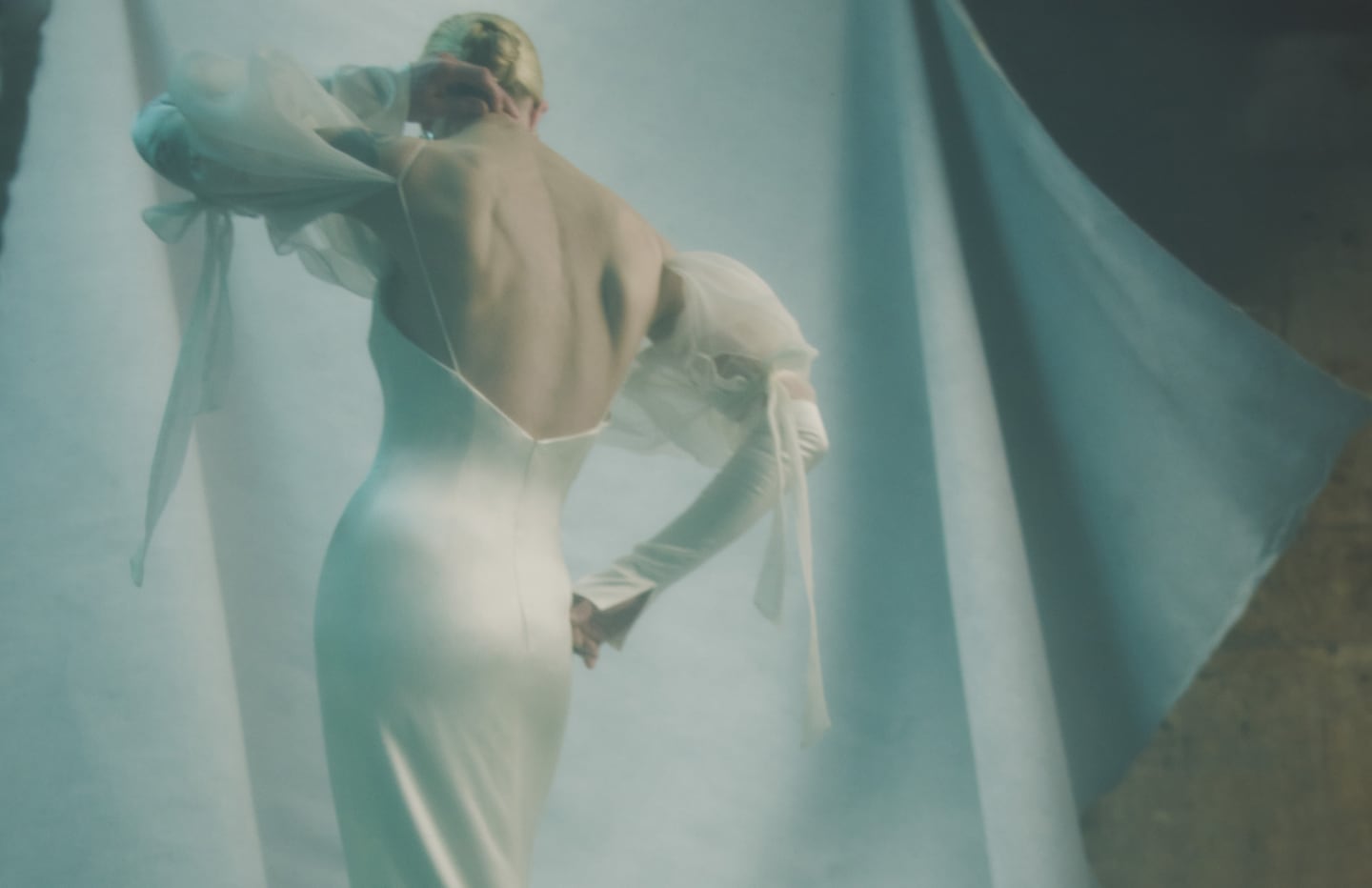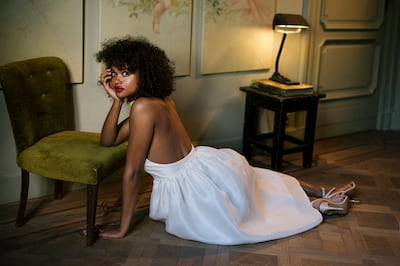
The Business of Fashion
Agenda-setting intelligence, analysis and advice for the global fashion community.

Agenda-setting intelligence, analysis and advice for the global fashion community.

Fallon Carter, a Brooklyn-based wedding planner, has never been busier. After a year of postponements and cancellations, wedding season is back and Carter’s bookings have quadrupled.
But prepping the brides and grooms of 2021 is coming with new demands. Case in point: Carter is working with a bride in Washington D.C. who needs two wedding dresses, one for a small ceremony in her parent’s backyard this June, and another for a big party next summer in Joshua Tree National Park.
Buying two dresses isn’t the only trend Carter has noticed. After waiting more than a year in some instances, brides are rushing to the altar. That means fewer custom gowns and more dresses bought straight off the rack.
“Right now, everything in the bridal process has to be fast and convenient,” Carter said. “Brides don’t want to waste any time. People don’t want to wait around for a dress.”
ADVERTISEMENT
The pandemic hit the bridal industry especially hard last year. But the brands and retailers that cater to brides and grooms – from wedding dress designers to preppy labels whose offerings fulfil the nebulous category “cocktail attire” – are expecting a banner 2021.
If those predictions pan out, it will mark at least a temporary reversal of a slow decline in the wedding fashion industry. Marriage rates are declining in many countries, and wedding dress sales have fallen globally by two percent each year since 2015, according to IBISWorld. In the US, 25 percent of Millennials said in a Pew Research Center poll they did not plan to get married. In China, the number of marriages fell 41 percent from 2013, according to the country’s National Bureau of Statistics.
Brides don’t want to waste any time. People don’t want to wait around for a dress.
“While our business within the US and European markets have quickly rebounded and continue to strengthen, areas like Asia have shown a slower process in their re-opening,” said Madeline Gardner, the designer behind the luxury label Morilee, which wholesales to salons in over 80 countries.
Bridal brands are trying to attract customers by offering non-traditional styles. Jumpsuits and separates have been trending for a while, but experts say they could appeal to brides who saw wedding norms change during Covid. With more weddings held outdoors during the pandemic, brides have gravitated to separates, blazers, mini dresses and jumpsuits, said Anna Price Olson, the associate editorial director of Brides magazine.
“The rules for weddings have gone out the window,” she said.
Going Digital
The e-commerce boom has come for wedding dresses as well. That’s a big adjustment for designers, who typically rely on bridal stores to find customers.
Some of those who have adapted to selling wedding dresses online are thriving. Belgian designer Valentine Avoh said she was able to grow her clientele in the US because she took requests for her dresses online, and brides were flocking to her Instagram during the pandemic.
ADVERTISEMENT

Even namesake fashion designers are eyeing digital as part of the new business model for bridal. Prabal Gurung recently launched a bridal collection that will be sold online starting in October, in addition to being stocked at other bridal boutiques. He has seen an uptake globally with interest from Singapore and Korea as well as the Japanese market.
“The global bridal market is massive,” he said. “As we all know, this is not just an American thing or European thing.”
Across the international market, the concept of designing a dress over Zoom has also taken off, thanks to the lockdowns brought on by Covid, said Olson. The design process for Indian weddings, where brides often travel back to India to make their dresses, have moved to Zoom too.
“Zoom fittings are giving brides access to designers in other countries, making the market more global overall,” she said.
Many brides who are returning to stores are finding that the bridal salon experience has changed. Fewer guests are allowed at a time and stores are also conducting pre-screening calls to learn a bride’s preferences and measurements.
Some brands see this as an opportunity to get closer to their customer. Justin Warshaw, chief executive and creative director at Justin Alexander said he’s doing pre-appointment calls to get details like style preferences and size choices.
“You’ve spoken to that bride, you know what they’re looking for, you can even pre-pull dresses, so that when they come in, they have a more swift [and] concise experience in-store,” said Warshaw.
A New Look
ADVERTISEMENT
More brides are buying dresses off the rack — a stark shift for an industry that has traditionally been a custom-order business.
“We started our stock programme right before the pandemic and it has been a great resource as more women shop online for their gowns,” said Danielle Hirsch, the designer behind bridal brand Danielle Frankel. “We are now receiving orders and shipping the styles out that day, which is a new concept within the bridal business.”
We are now receiving orders and shipping the styles out that day, which is a new concept within the bridal business.
Gardner said the expectation to walk out of a store with a gown is a global phenomenon.
“It used to be that brides would place an order for three to four months from now but now [bridal salons] are asking for more inventory because weddings are happening quicker,” said Gardner.
Carter, the Brooklyn-based wedding planner, said more brides are splurging on multiple looks.
“Brides now want looks for the luncheon, the rehearsal dinner and then also need a party dress,” said Olson.
The appetite to buy multiple party looks inspired Gardner’s Morilee to launch a collection dubbed “The Other White Dress,” which features white jumpsuits and a knee-length sheath dress.
“Brides are telling us they’ve developed a new appreciation for the party and want a few different events that each mean something different,” she said.
In February, US bridal chain David’s Bridal launched its “Little White Dress” boutique to cater to micro-weddings that were taking place because of Covid. Heather McReynolds, the brand’s vice president, believes the line will continue to perform even after Covid, as the brand expects the trend of buying looks for multiple wedding events will continue.
Thinking of Gen-Z
Designer Brenna Simmons recently launched her line, Nordeen, which sells bridal separates like tops, skirts, capes, veils and sweaters. Simmons said the idea was to speak to young brides eschewing traditional looks.
“The target market has been elopements and micro-weddings, but I’m foreseeing this being a trend amongst young brides who … think the big party with hundreds of guests feels outdated,” Simmons said.
David’s Bridal also launched a line of separates last year, which McReynolds said was done with Gen-Z in mind.
“Gen-Z craves being individual and we’re seeing that play out with separates, where they can mix and match till they find their unique bridal look,” McReynolds said.
Gen-Z craves being individual and we’re seeing that play out with separates, where they can mix and match till they find their unique bridal look.
Warshaw said his Lillian West collection, which features loose lace bohemian-style dresses has seen an 80 percent increase in sales in the US year to date. Warshaw said his customer is actively seeking bridal looks that are “a little bit more informal.”
Simmons said that Gen-Z shoppers are conscientious of sustainability and that selling bridal separates will appeal to customers who wear sweaters, tops and bottoms. Other bridal brands are taking steps towards sustainability with materials, like the Spain-based bridal brand Sophie et Voilà, which debuted a collection made of recycled polyester fabrics.
Gurung, who will be making his bridal looks in New York, said Gen-Z’s sustainability focus is not just about materials, but also about a brand’s practices and transparency.
“Sustainability is not just about fabric, it’s about your practices [and] fair wages,” said Gurung.
Related Articles:
Weddings Are Changing. Can Designers Keep Up?
As the German sportswear giant taps surging demand for its Samba and Gazelle sneakers, it’s also taking steps to spread its bets ahead of peak interest.
A profitable, multi-trillion dollar fashion industry populated with brands that generate minimal economic and environmental waste is within our reach, argues Lawrence Lenihan.
RFID technology has made self-checkout far more efficient than traditional scanning kiosks at retailers like Zara and Uniqlo, but the industry at large hesitates to fully embrace the innovation over concerns of theft and customer engagement.
The company has continued to struggle with growing “at scale” and issued a warning in February that revenue may not start increasing again until the fourth quarter.